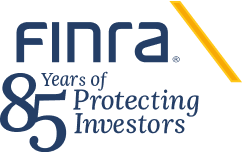As announced by the Board of Governors of the Federal Reserve System in the Federal Register on October 28, 2021, FINRA will collect detailed data on depository institutions’ daily transactions of marketable U.S. Treasury securities and of the debt and MBS issued by U.S. federal government agencies including government-sponsored enterprises (agencies) via its Trade Reporting and Compliance Engine
Summary
FINRA has adopted amendments to Rule 2165 (Financial Exploitation of Specified Adults) to permit member firms to: (1) place a hold on a securities transaction (in addition to the already-permitted hold on a disbursement of funds or securities) where there is a reasonable belief of financial exploitation; and (2) extend a temporary hold on a disbursement or transaction for an additional
Effective Monday, December 5, 2022, ORF will begin supporting timestamps up to nanosecond granularity (HH:MM:SS.sssssssss) in accordance with amendments to FINRA’s equity trade reporting rules. Please refer to FINRA Regulatory Notice 20-41 for additional information on firms’ reporting obligations under these amendments. ORF will support timestamps of up to nanosecond granularity on all inbound
the best mutual funds to invest in 2022
My comments are as follows: 1. The T-2 settlement period needs to changed to a T-0 or T-evening (the day of). The fact that retail investors have to wait two days, whereas institutional investors don't, violates a free and fair market. 2. Eliminate the loopholes and gaps in the rules that allow institutional investors to wait until T-35 and beyond to settle FTDs. For an example AMC and GME
As part of Transparency Services improvement initiatives, beginning on December 5, 2022, FINRA will re- platform the OTC Reporting Facility (ORF) to a new Linux-based operating system.
FINRA will offer ORF Clearing function testing in the test system (NTF) beginning Monday, October 31, 2022. This testing will allow ORF clients to view clearing transactions in TRAQS as well as
I have been investing for over 20 years, mainly in common stocks but sometimes in so-called “complex products” like futures, options, leveraged and inverse ETPs, etc. I use them when I believe they are suitable tools for the market situation at that moment. I don’t mean that I always make right investment decisions but, as a retail investor, I find that it is very important for me to have the
I think the leveraged and inverse funds are just like many other securities or any investment that you can lose most or all your money, not to mention the above funds are not a single stock investment so they are intrinsically diversified. Individual investors like us use the leveraged and inverse funds as important tools to hedge our main investment elsewhere. The public tools should be freely
FINRA Rule 4111(b) requires the Department of Member Supervision (Department) to calculate annually a member firm’s "Preliminary Identification Metrics" to determine whether the firm meets the "Preliminary Criteria for Identification."1 A key driver of that is whether a member firm’s Preliminary Identification Metrics meet quantitative, risk-based "Preliminary
As part of its Transparency Services improvement initiatives, beginning in December 2022, FINRA will re- platform the OTC Reporting Facility (ORF) to a new Linux-based operating system. These changes will be implemented in addition to the Trade Data Dissemination Service (TDDS) protocol changes FINRA previously announced. Except for the timestamp changes listed below, all ORF trade reporting
